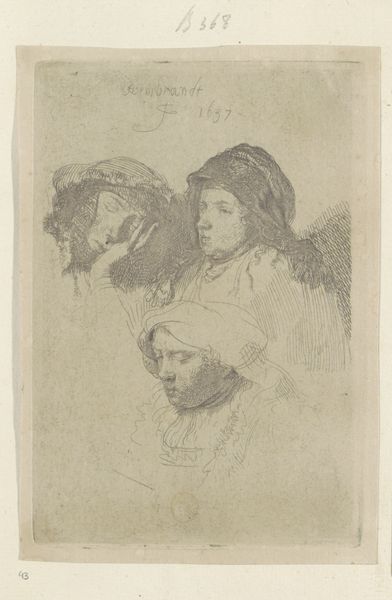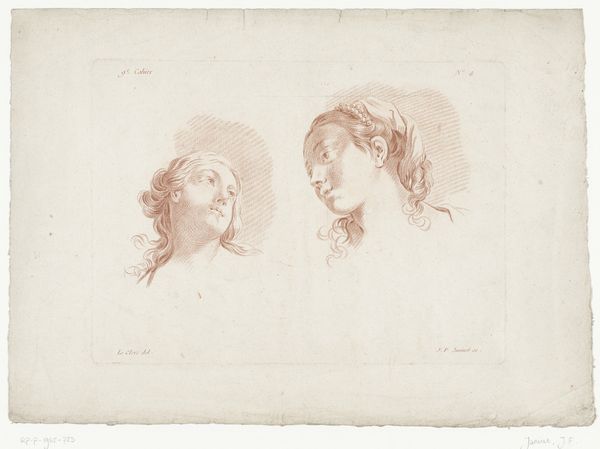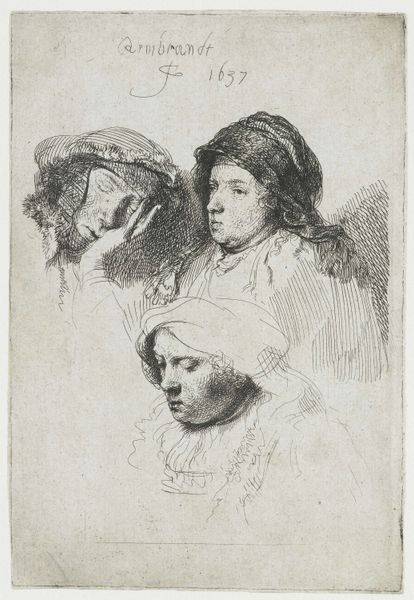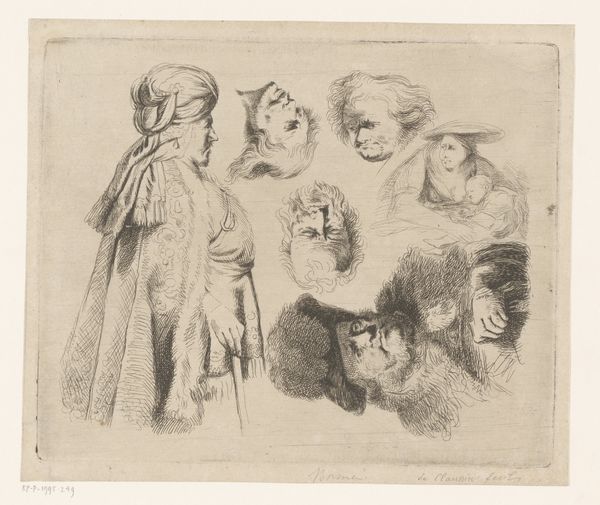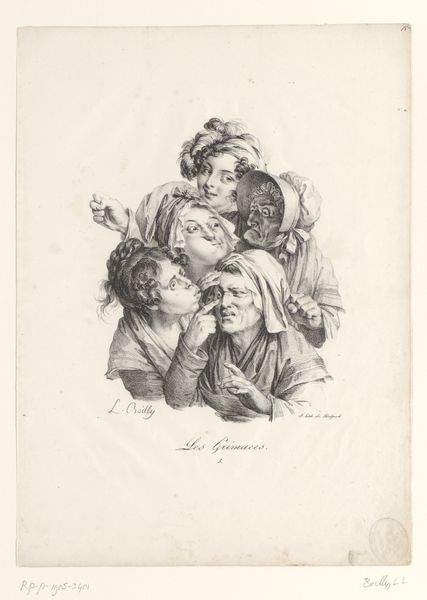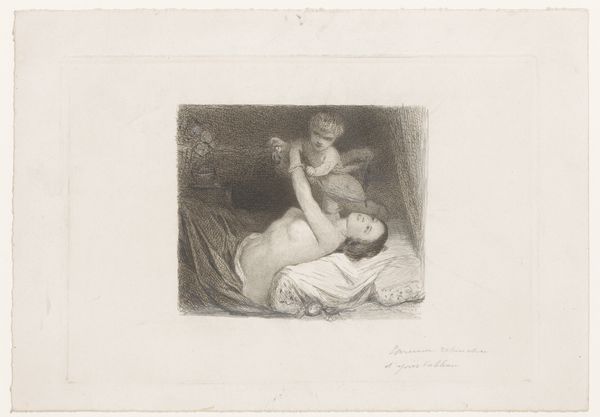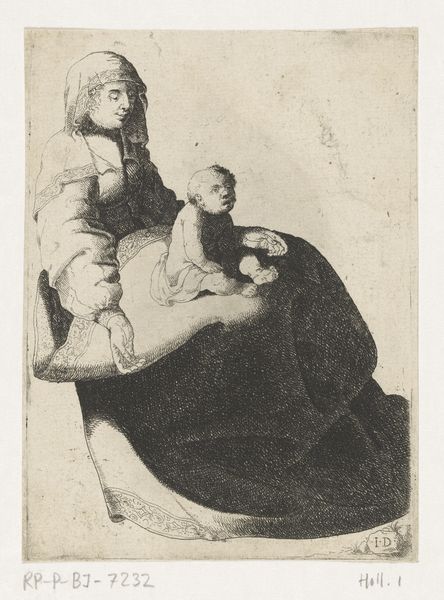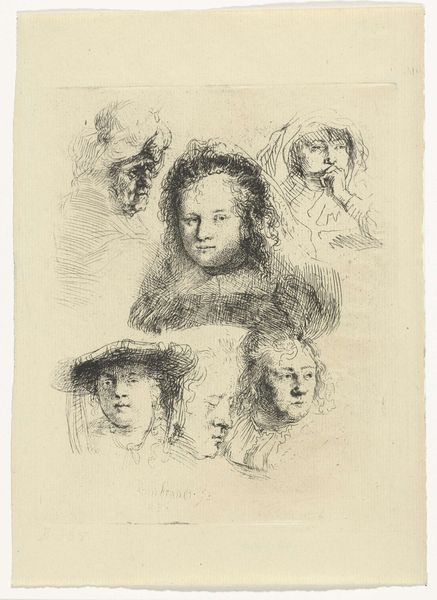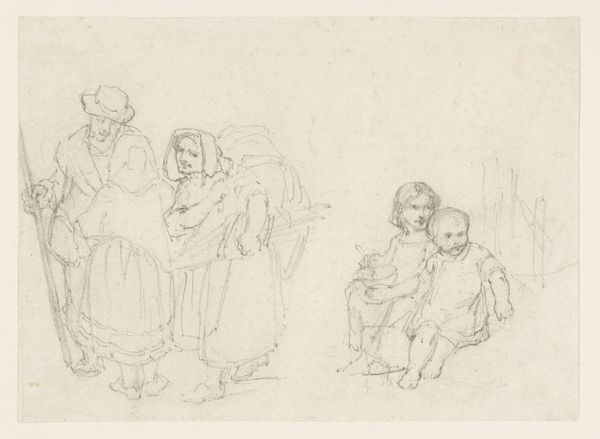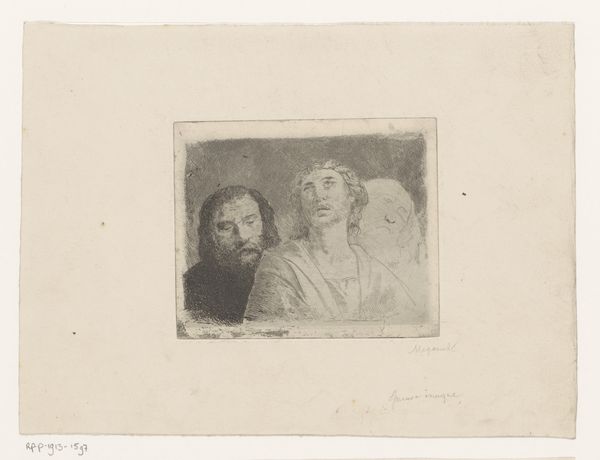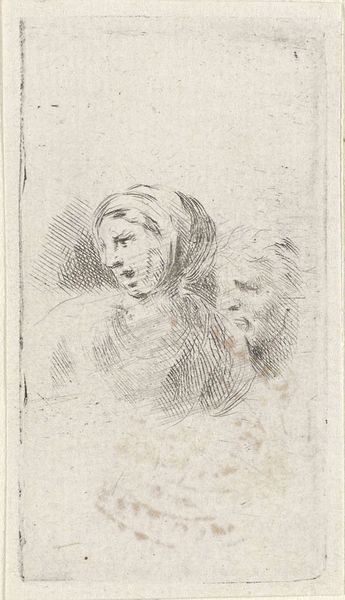
drawing, print, etching, paper
#
portrait
#
drawing
# print
#
etching
#
paper
#
pencil drawing
#
northern-renaissance
Dimensions: height 144 mm, width 96 mm
Copyright: Rijks Museum: Open Domain
Editor: So, this etching on paper is titled "Three Heads of Women: One Asleep", dating from between 1805 and 1844, attributed to Ignace-Joseph de Claussin. I’m struck by the intimacy of it, almost like a stolen glance. What catches your eye? Curator: Well, I immediately consider how portraiture served as a powerful tool in shaping societal perceptions of women during this period. These heads, are they presented as types or individuals? Notice how one is literally 'asleep'. What does that suggest about the perceived agency, or lack thereof, of women in society at the time this was produced? Editor: That's interesting, I hadn’t considered the sleeping figure as a lack of agency. Do you think the print medium itself played a role in that portrayal, compared to, say, a painted portrait? Curator: Absolutely. Prints, unlike unique painted portraits, were more readily reproduced and distributed. Therefore, these images had a wider circulation and a more potent ability to disseminate certain notions and understandings about women’s roles and place in society. What was Claussin’s intention here, to celebrate or to objectify? The northern Renaissance influence speaks to its classical visual precedent. Editor: So the very accessibility of printmaking contributed to reinforcing specific socio-cultural roles. It does seem to normalize a passive image, I must say. Curator: Exactly. Considering the political upheavals and shifting social structures of the era, how might these depictions have functioned in negotiating ideas of stability, order, and traditional gender roles? Editor: That gives me a lot to think about – how art can reflect and actively shape societal norms, all while appearing to be just a simple portrait. Thank you for opening my eyes to a totally different point of view. Curator: Indeed. Art is always in dialogue with its historical context, so understanding that helps reveal layers of meaning often unseen at first glance.
Comments
No comments
Be the first to comment and join the conversation on the ultimate creative platform.
